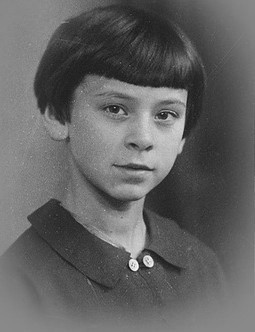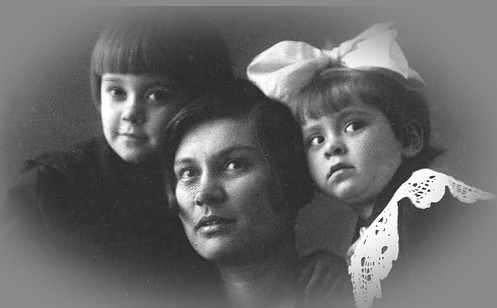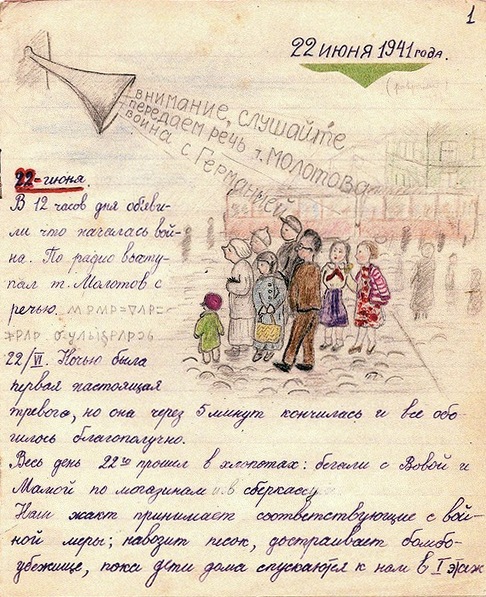“We stayed in Leningrad”
On January 27, the city on the Neva celebrates 76 years since the lifting of the siege. In anticipation of this date, we recall that LISI (one of the former names of SPbGASU) is also inscribed in the siege history through the fates of many of its employees and graduates.
Tatyana Vassoevich
At that time, one of the graduates of our university Tatyana N. Vassoevich kept a diary. The first entries in it were made on the first day of the Great Patriotic War. June 22, 1941 got on to Tatyana in her native house on Vasilyevsky Island. The thirteen-year-old girl lived an ordinary life; in September, she was going to continue her studies at the art school. But these plans had never worked out: the art teacher volunteered for the front. Tatyana with her mother and brother, who was fifteen, remained in the sieged city. On July 17, 1941 Tatyana recorded:
“At 10 in the morning, we were in Leningrad!!! At the station, mom and Aunt Natasha caught a taxi, and we went home. We passed by the revered Academy of Arts, but ... instead of artists, the Red Army soldiers and the officers were could be seen in the open windows. When I arrived, I found out that ration books were introduced as of July 18th.”
Together with other Leningraders, the girl stood in long lines for groceries. The family had a catastrophic lack of money, so Tatyana’s elder brother would secretly sell his portion of bread at the market and give money to his mother until she found out about it and barred him from doing this. In the cold winter of 1941-1942, the brother and sister, who were very close, stayed on duty on the roofs, guarding incendiary bombs, and in their free time would go to the library to read, draw plans for palaces with pools and were drawing greenhouses.
{gallery name="Вассоевич 012020"}
The girl’s brother and mother died in the first siege winter. “I-42, at 6.28, Vova died. 7/II at 11.45 my mom died,” is written in the diary.
Most often, the deceased Leningraders were buried in common graves; however, Tatyana managed to organize separate funerals for her relatives.
Tatyana Vassoevich’s son, professor of St. Petersburg State University Andrei L. Vassoevich recounts:
“When her brother died, she bought a coffin for the remaining money. Her mother was already very weak and could do nothing. "The Smolenskoe cemetery was closed down, but she begged the watchman to dig a grave for cereals and bread.”
Mom’s body lay in the apartment for nine days, until the girl was able to arrange another funeral. In her diary, she drew a plan of the cemetery and wowed that if she survived, she would erect monuments on the graves of her nearest and dearest. Making this map, Tatyana used a secret code and glued diary pages together, because she understood: her mother and brother were buried there semi-legally.
In the spring of 1942, the girl was evacuated to Alma-Ata, where she got together with her father. He was an oil geologist and, when the siege ring closed, he was on a duty journey and could not get back to his family. Returning to her hometown after the war, Tatiana tried to find her brother's classmates, but no one was left alive.
Tatyana Vassoevich graduated from high school, and after that, an art school and the Faculty of Architecture of LISI; she had been teaching painting for many years.
“She always told her students that keeping a diary is necessary, because that is how history is recorded,” says Andrei Vassoevich.
✔ You can read the memoirs of Tatyana Vassoevich and other children who survived the blockade here.
Text: Alexandra Podolnikova







